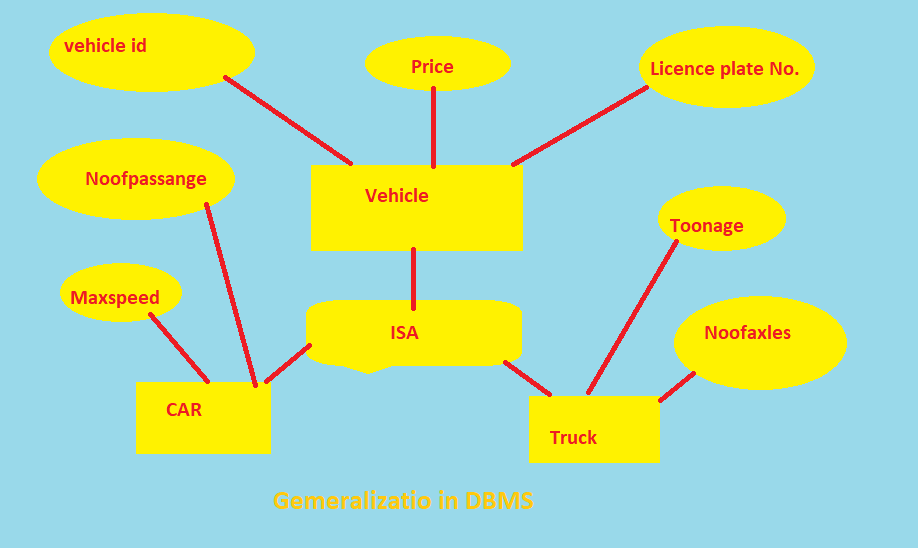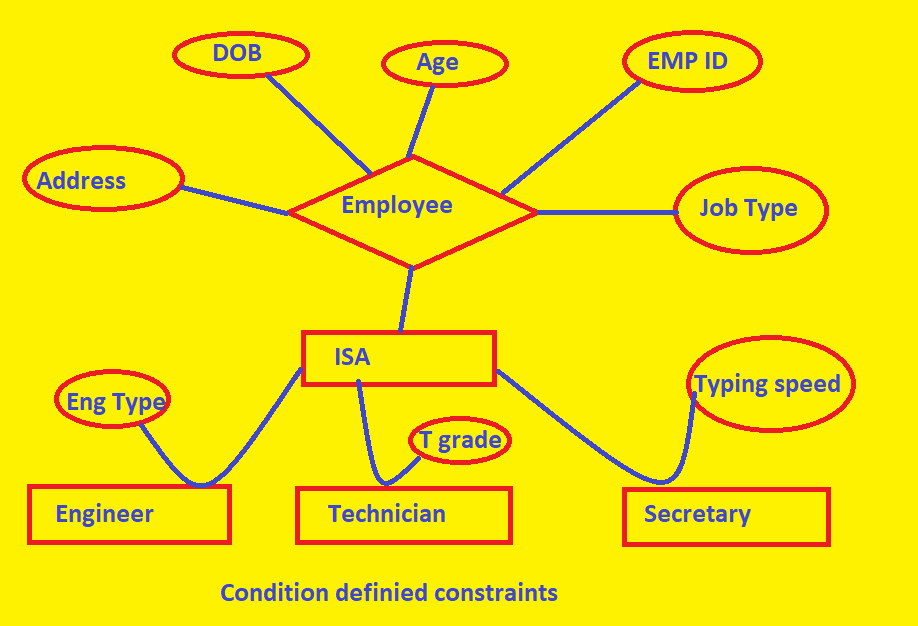There are many important features are available in extended features of E R model.These are ..
- Superclass and Subclass
- Specialization
- Generalization
- Condition defined v/s User defined
- Disjoint vs Overlapping
- Total vs Partial specialization
Superclass and sub class -:
Certain instance of an entity class can include attribute that are not needed in other instance of the same entity class. In these cases it is useful to use a superclass /subclass structure.
- Subclass-: A subgroup of a entity type which has attribute that are distinct from those in other subgroups.
- Superclass-: A generic entity type that has a relationship with one or more subclass
- Inheritance-: Subclass entity inherit values of all attribute of the superclass. An instance of a subclass is also an instance of the superclass.
Specialization-: It is the process of defining a set of subclass of an entity type This entity type is called the superclass specialization. as like an entity set Employee with attribute Name,Emp id, address,dob etc. are classified in as one of the
- Engineer
- Technician
- Helper
It tells about the Employee specialization.
Generalization -: It is the reverse process of abstraction which suppress the different among several entity types. It is a form abstraction that specified that two or more entities that share common attribute can Generalization into a higher level entity type called a super type or generic entity. The lower level of entities become a sub type or categories to the supertype,subtype are dependent entity.

Condition defined -: In this lower level entity sets membership is evaluated on the basis of whether or not an entity satisfies an explicit condition or predicate. As like Employee entity type has an attribute job type as show in this …

User Defined -: When we don’t have a condition for determining membership in a subclass, the subclass is called user defined. Membership in such a subclass is determined by the database user when they apply the operation to add an entity to the subclass therefore the membership is specified individually for each entity by the user not by any condition that may be evaluated automatically.
Disjoint-: An entity instance can be in only one subtype. As like the entity Employee may have two subtypes classified and wages.
Overlapping-: An overlapping category is when an entity instance may be in two or more subtype. as like a person is working in a university and could also a student in the same university. This is called overlapping.
Total Specialization -: It specifies that every entity in the superclass must be a member of least one subclass in the specialization.
Partial Specialization -: In this some of higher level entity may not belong to any lower level entity set.